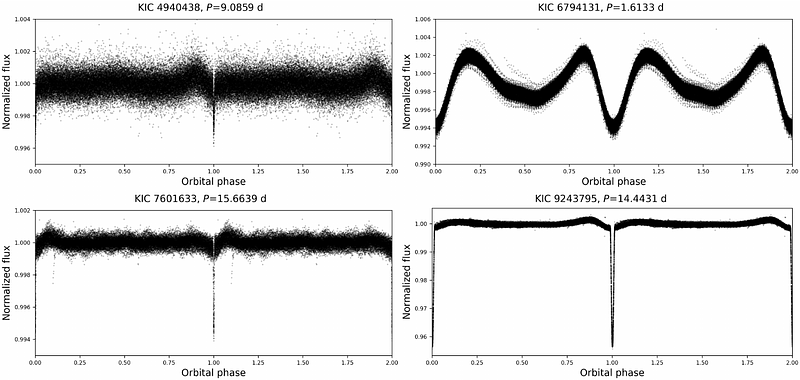Heartbeat Stars Recognition Based on Recurrent Neural Networks: Method and Validation

Heartbeat Stars Recognition Based on Recurrent Neural Networks: Method and Validation
Min-Yu Li, Sheng-Bang Qian, Li-Ying Zhu, Wen-Ping Liao, Lin-Feng Chang, Er-Gang Zhao, Xiang-Dong Shi, Fu-Xing Li, Qi-Bin Sun, Ping Li
AbstractSince the variety of their light curve morphologies, the vast majority of the known heartbeat stars (HBSs) have been discovered by manual inspection. Machine learning, which has already been successfully applied to the classification of variable stars based on light curves, offers another possibility for the automatic detection of HBSs. We propose a novel feature extraction approach for HBSs. First, the light curve is transformed into the frequency domain via Fourier transform, then the amplitudes of the first 100 harmonics are extracted, and finally these harmonics are normalised as feature vectors of the light curve. A training data set of synthetic light curves is constructed using ELLC, and their features are fed into recurrent neural networks (RNNs) for supervised learning, with the expected output being the eccentricity of these light curves. The performance of RNNs is evaluated using a test data set of synthetic light curves, achieving 95$\%$ accuracy. When applied to known HBSs from OGLE, Kepler, and TESS surveys, the networks achieve an average accuracy of 88$\%$. This method successfully identify four new HBSs within the eclipsing binary catalog of Kirk et al. The use of orbital harmonics as features for HBSs proves to be an effective approach that significantly reduces the computational cost of neural networks. RNNs show excellent performance in recognising this type of time series data. This method not only allows efficient identification of HBSs, but can also be extended to recognise other types of periodic variable stars.